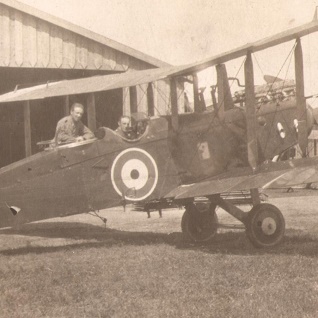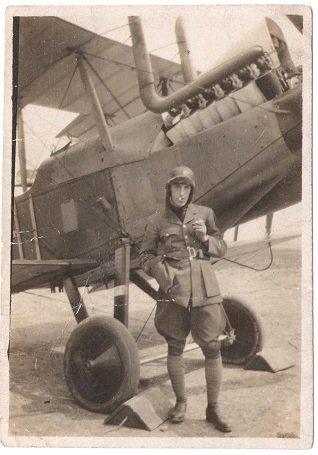Latest News
Early images from the New House Textiles archives

Not long ago we came across an old file of images taken between 1918 and the mid 30's by New House's founder, Harold Stanier. It contained images of him learning to fly at Duxford, the Crimea as a bomber pilot and the early days of the Company.
Harold was always a keen photographer and took well-considered shots of factory life in Manchester and South Wales. Originally named H. Stanier & Co, the name was changed in the early 70's to New House Textiles Ltd after he sadly passed away.
Harold (my grandfather) told me he lied about his age to join the army in 1918. However was bright and ambitious, so was selected to become a pilot flying RE8 bombers and trained at Duxford.


Blow-up of Harold in the cockpit :

The First World War ended just as he completed his training, but realising mass unemployment was round the corner, he volunteered for special duties getting sent to the Crimea to fight alongside the White Russians against the Bolsheviks. On the way there, his ship was caught in a terrible storm with the cargo breaking loose in the hold, smashing everything and threatening to sink the ship. The purser sounded the SOS, 'Sirs, the ship is going to bugg**ation' he said, but the captain managed to force the ship into harbour. They tried to tie it to the railway lines on the quay, but Harold remembered they were torn into the air by the heavy seas as the ship sunk.
Eventually they were supplied with new airplanes and Harold flew missions supported by armoured trains. As the planes ran short of fuel, they'd land near the track and wait sometimes for days, for the train to arrive and pick them up.


In 1921 Harold returned home to Manchester and with his savings, bought his first knitting machine. He ran this in his front room for a period before moving to the basement of a flour mill.
He never collected his campaign medals, shunned the reunions and disliked the war anniversaries. Bombing people had never agreed with him and thought there was no glory in war.
As well as circular knitting, he became interested in the (then) new technology of warp knitting. Invented in Germany, warp-knitting promised a woven fabric-like structure, but at much faster speeds and at much wider widths than conventional woven looms could go in those days. This led to many a visit to Chemnitz, Germany with his son John in the 30's.
Harold bought his warp-knitting machines from Germany, but to knit you need to make a warp (hundreds of parallel yarns wrapped round a drum) and he developed his own unique way of creating this warp. These are his photos taken in the late 1920's and early 1930's :





Sometime in the 1930's a letter arrived announcing a new industrial estate was being built in South Wales, calling it 'a distressed area' and the government was offering grants to companies who moved there. Harold threw it in the bin, but a few days later took delivery of his new Riley.

Thinking South Wales would be a good run for his new car, he yanked the letter out of the bin and took the trip. He was well impressed by what he saw, took two of the new purpous-built factories and moved in. These are the images he took on that trip :



With his plant installed, Harold grew the business buying more warp-knitting machinery from Germany and continuing to develop his own warping equipment.





In the 50's and 60's Harold was working on his own creel tensioning systems and yarn-breakage detectors, often called stop-motions. He sold these to many companies such as British Nylon Spinners and Courtaulds, equiping their factories.
Today New House continues to sell and develop new stop-motion technology. We have sold our NH-58 model for many years to markets overseas.

However, we are working on a new system that uses an IR beam to detect interuption once a yarn breaks.

....Grandpa would be pleased that his work carries on.
© 2025 New House Textiles TRADE




